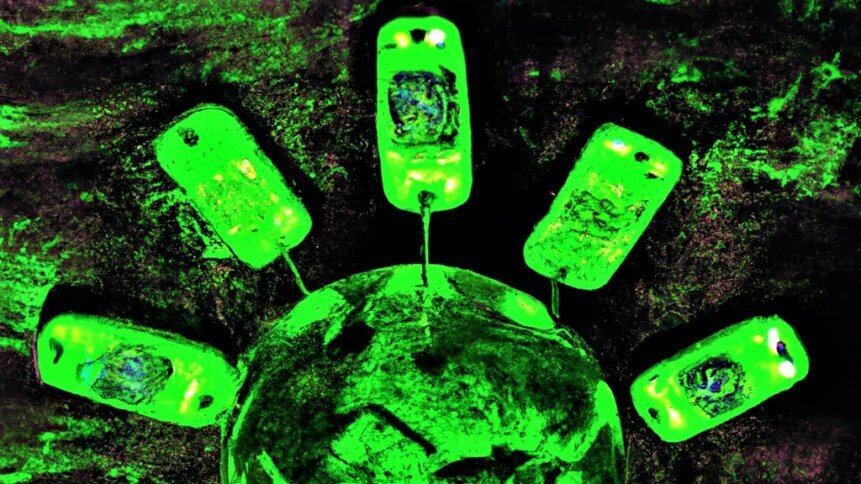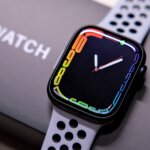iOS update adds to carbon emissions forecasting trend

|
Getting your Trinity Audio player ready...
|
iPhone maker Apple signaled its intention to give iOS users a clean energy charging option when the Cupertino headquartered tech giant previewed the features of iOS16.1 towards the back end of 2022. Apple’s support pages describe ‘clean energy charging’ as a ‘new setting that can try to reduce your carbon footprint by selectively charging when lower carbon emission electricity is available’. And the iPhone feature is part of a bigger trend in the technology sector, which leverages carbon emissions forecasting to lessen the environmental impact of digital devices and information services.
Apple’s product environmental reports show that device use accounts for 17% of the lifecycle carbon emissions associated with its flagship iPhone 14 Pro. Interestingly, this figure jumps to 49% if we rewind the clock to 2009 and consider the iPhone 3G – Apple’s breakthrough device that gave rise to the app store and put the ‘smart’ in smartphone. Improvements over the years in charging efficiency and battery technology, as well as modern devices having components that are more complex and demanding to produce compared with predecessors, could be contributing factors. But that’s a story for another day.
The take-home message from Apple’s lifecycle analysis is that while the best thing smartphone users can do for the planet is to trade in and reuse mobile devices – rather than buying new products – there are still environmental savings to be made elsewhere. Next on the list after the impact of production is device use, which is where carbon emissions forecasting fits in. When activated by the user, Apple’s clean energy charging iOS setting will attempt to initiate charging during periods when wind, solar, hydroelectric, and other renewable energy sources are most active.
Electricity maps
In its clean energy charging support notes, Apple doesn’t name the data source that’s being used for carbon emissions forecasting. But the iPhone maker has a number of choices thanks to the growth in environmental monitoring together with the emergence of online visualization tools. And Apple is by no means the only tech company that is exploring how energy grid reporting tools can boost environmental performance. For example, Google has long used Electricity Maps to calculate the carbon intensity of the electricity powering its data centers. The search giant then attempts to align its compute load with low-carbon energy by shifting tasks with no time constraint to periods of the day when renewable energy is most abundant.
Cloud platform-as-a-service (PaaS) providers such as Platform.sh use similar data to make it easy for customers to choose data center locations based on carbon density. “By changing the location for deployment from a high-carbon grid to a low-carbon grid, our clients can reduce their CO2 emission by up to 15x,” writes Platform.sh on its green-hosting page. And, continuing this theme, The Green Web Foundation provides an online tool that answers the question, is your website hosted green?
There’s much to celebrate when it comes to carbon emissions forecasting, and this includes work by National Grid – the electricity system operator for Great Britain. In 2020, the National Grid teamed up with the WWF, Environmental Defense Fund Europe, and the University of Oxford department of Computer Science to forecast the carbon intensity and generation mix 96+ hours ahead region-by-region in the UK. Available as an OpenAPI for developers to integrate into smart products and services, the machine learning output enables electricity consumers to schedule power usage when carbon intensity is predicted to be low.
The National Grid data is also available as an app that’s free to download from Apple’s App Store or via Google Play for Android users. And, in many ways, this simple-to-use electricity scheduling guide makes Apple’s clean energy charging setting redundant, at least for users in the UK. Other options for device users wanting to shift electricity use to cleaner times include WattTime, which provides automated emissions reduction data as a paid-for service. There are other approaches to consider too.
AI in the sky
Climate TRACE makes information available on the status of around 18,000 fossil-fuel power plants globally, which are estimated to be responsible for more than 30% of global greenhouse gas emissions, according to World Resources Institute analysis. What’s more, the Climate TRACE initiative has expanded its carbon emissions forecasting capabilities and now captures data on 80,188 physical assets worldwide, including oil and gas fields, transportation systems such as the Los Angeles road network, airports, and more.
The Climate TRACE project highlights the power and versality of satellite imaging. To gather dynamic fossil-fuel power plant data, the system feeds satellite images that show chimney stack smoke and water vapor plumes, indicative of when a power plant is operating, into its model. And, because the deep-learning algorithm has been calibrated with plant-reported power generation data matched to historical images, the trained AI model can infer emissions details from patterns that it sees in over 5000 non-cloudy pictures received daily.
Thanks to the work of environmental analysts and power providers, checking carbon emissions forecasting data has become almost as straightforward as looking up weather details today. And, making this information readily available to device makers through APIs plays into other environmental trends, such as the adoption of electric vehicles (EVs). For example, researchers in the US have highlighted that EV emissions can differ by as much as 40% depending on when car owners chose to charge their vehicles.









